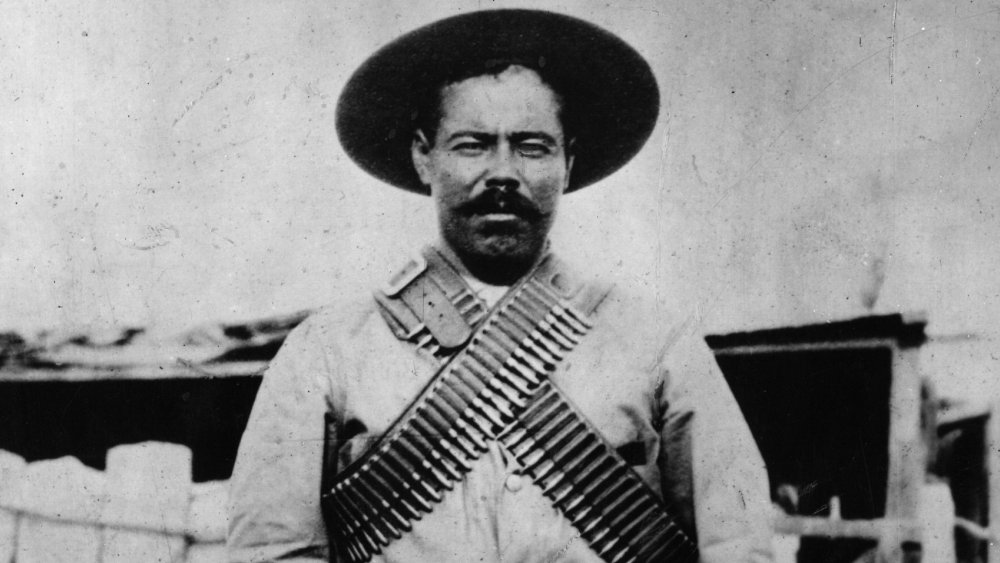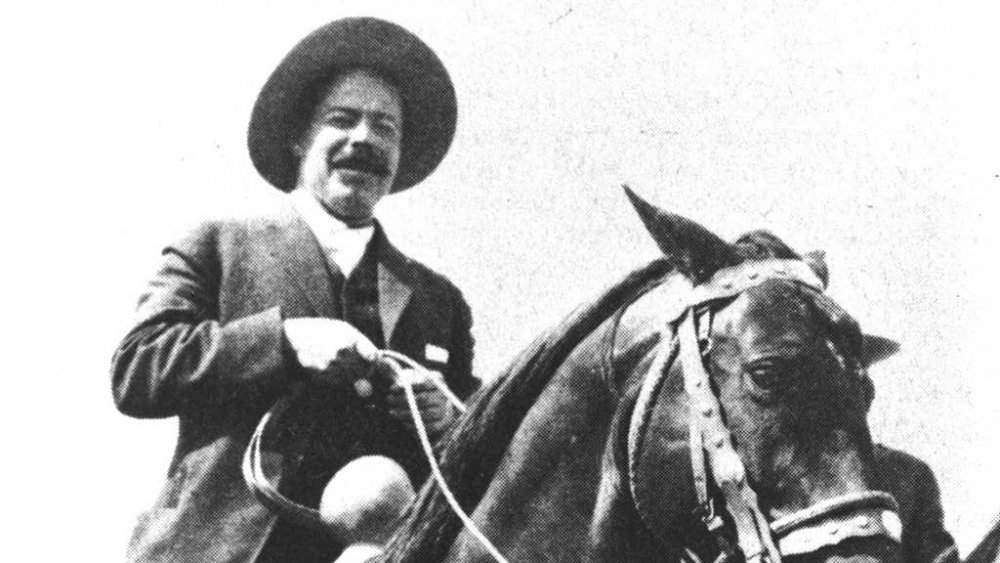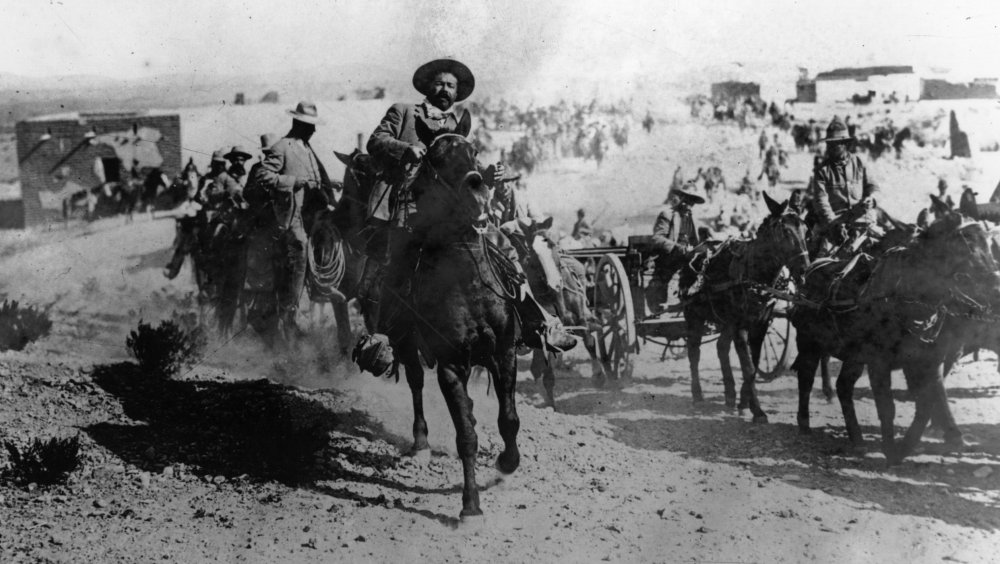The Truth About Pancho Villa's Death
In 1961, the San Francisco Chronicle ran the spectacular headline: "The Adventure of Pancho Villa's Missing Head." The article recounted how "Pulitzer Prize-winning columnist Stanton Delaplane, accompanied by a 5-man Chronicle news and photo team" and "assisted by an armada of more than 100 flyers," embarked on a journey in search of the missing head of Mexican revolutionary Francisco "Pancho" Villa. At one point "Villa commanded the most feared cavalry in the world," according to ThoughtCo. As the head of the División del Norte (Division of the North), he was such a formidable horseman that people called Villa the "Centaur of the North." Here's how he became the most famous headless horseman never to haunt Ichabod Crane.
Making out like a literal bandit
Pancho Villa was the moniker adopted by Doroteo Arango, who was born on June 5, 1878. The son of a farmer, Villa spent his early years helping his family. He would become the head of that family at the age of 15 after his father died, per Biography. It was in his capacity as protector of household that Villa fatally shot a man for harassing one of his sisters. This triggered a pivotal chain of events that would turn Villa into a villain to some, a hero to others, and a legend to everyone.
After killing his sister's harasser, Villa became a fugitive and joined a group of bandits. While on the lam he assumed his famous alias. Hailed as a Mexican Robin Hood, according to the Library of Congress, Villa sold stolen cattle and graduated to robbing banks and wealthy residents. He later aligned himself with Francisco Madero and helped lead the revolution that toppled Mexican dictator Porfirio Díaz.
Mexico's headless horseman
Under the Madero government, Villa would be sentenced to death for allegedly stealing the horse of General Victoriano Huerta. But the crafty bandit escaped and later assassinated Madero. He then declared war on Madero's predecessor, the aforementioned General Victoriano Huerta. Over the course of his exploits, Villa would permit an American newsreel company to film some of his battles.
After helping to install Venustiano Carranza as Mexico's leader, he teamed up with President Woodrow Wilson and a fellow revolutionary to unseat Carranza. Villa became a villain in the eyes of Americans after executing 17 U.S. citizens. In 1920, he agreed to retire from fighting in exchange for a pardon. Three years later he was assassinated. According to The Vintage News, legend has it that his final words were, "It can't end like this. Tell them I said something."
Despite his legendary life, Villa didn't come out ahead in the end. But someone else did. Per the journal Western Folklore, in 1926, "somebody violated Villa's tomb and beheaded his corpse."


